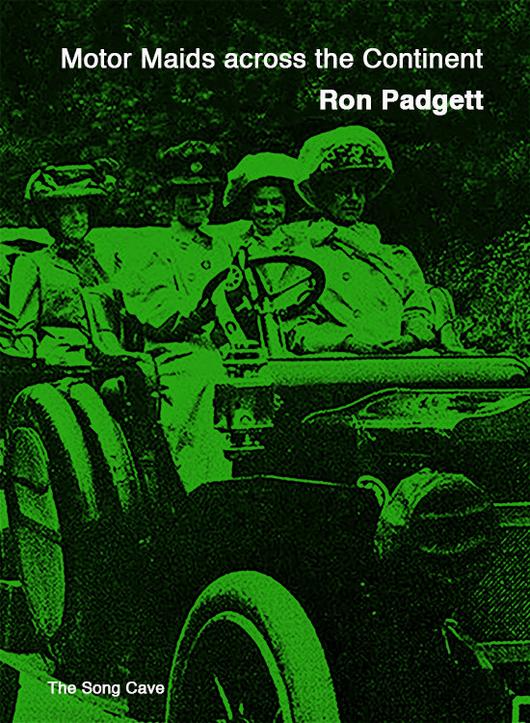
I met with poet Ron Padgett at his East Village apartment, where he and his wife have lived since 1967. He and I sat surrounded by books, archive boxes, and artwork. I asked about the oil painting just above my head, a navy blue background with thirty-odd cigarette butts falling every which way. Padgett told me it is by Joe Brainard, the late writer and artist, and Padgett’s close friend since their childhood in Oklahoma. Padgett wrote about him in Joe: A Memoir of Joe Brainard (2004). His most recent book, Motor Maids across the Continent, came out in the spring of 2017. Fifty years earlier he had found an old adventure novel intended for teen girls, The Motor Maids across the Continent (1911), in a used book shop. Later that day his teacher at Columbia, Kenneth Koch, took the book out of his hands, crossed out a few passages, and on page 3 wrote “The End,” kicking off Padgett’s own exploration and transformation of the found material.
Padgett is known not only for his poetry but also for his translations of Blaise Cendrars and Guillaume Apollinaire. Since 1960 he has been part of an extended circle of writers, artists, filmmakers, and modern dancers, mainly in New York, such as Koch, Brainard, Ted Berrigan, Rudy Burckhardt, George Schneeman, Bill Berkson, Kenward Elmslie, Alex Katz, Anne Waldman, Douglas Dunn, Trevor Winkfield, Frank O’Hara, Paul Auster, Bill Corbett, Glen Baxter, Alice Notley, Charles North, Clark Coolidge, Tom Clark, David Shapiro, Bill Zavatsky, Peter Schjeldahl, James Schuyler, and Jim Dine. Richard Hell has cited him as a great inspiration. Most of the poems in Jim Jarmusch’s film Paterson (2016) are by Padgett. Next year Coffee House Press will issue his collection of new poems, Big Cabin.
—Stephanie La Cava
I. Dada Heroes / Picabia / Duchamp
THE BELIEVER: What’s in the Picabia box high up on that bookshelf?
RON PADGETT: I really don’t know. I haven’t taken that box down in a long time.
I read about Picabia when I was in college in the early 60s and had seen a little of his work at MoMA. I got interested in Dada and then in 1965 I went to Paris for a year. That’s where I got really interested in him, because the resources there were so much greater. The books in that box, I bought most of them in 1965 or ’66.
BLVR: Were you interested in all phases of his work, or any particular moment?
RP: I was interested in the whole package. He was such an interesting and mysterious character, and I liked not only his writing and visual art,...
You have reached your article limit
Sign up for a digital subscription and continue reading all new issues, plus our entire archives, for just $1.50/month.
Already a subscriber? Sign in




